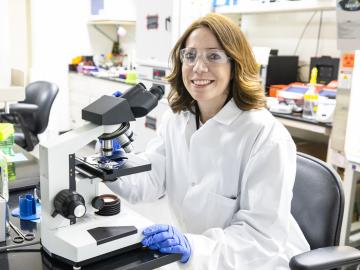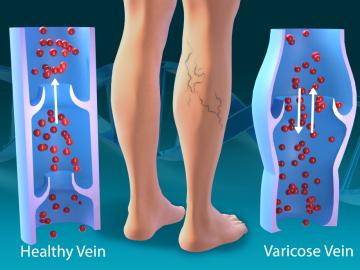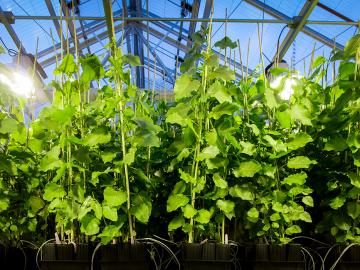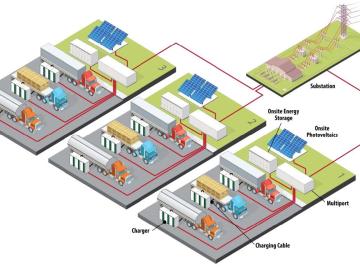
Filter News
Area of Research
- (-) Biology and Environment (73)
- (-) Energy Science (155)
- (-) Nuclear Science and Technology (39)
- Advanced Manufacturing (6)
- Biological Systems (2)
- Building Technologies (3)
- Computational Biology (1)
- Computational Engineering (2)
- Computer Science (4)
- Electricity and Smart Grid (1)
- Energy Sciences (1)
- Fuel Cycle Science and Technology (1)
- Functional Materials for Energy (2)
- Fusion and Fission (30)
- Fusion Energy (11)
- Isotope Development and Production (1)
- Isotopes (4)
- Materials (69)
- Materials for Computing (7)
- Mathematics (1)
- National Security (12)
- Neutron Science (22)
- Nuclear Systems Modeling, Simulation and Validation (1)
- Quantum information Science (1)
- Supercomputing (65)
News Topics
- (-) Bioenergy (66)
- (-) Buildings (38)
- (-) Clean Water (19)
- (-) Composites (19)
- (-) Energy Storage (72)
- (-) Molten Salt (5)
- (-) Nuclear Energy (41)
- (-) Summit (13)
- 3-D Printing/Advanced Manufacturing (84)
- Advanced Reactors (15)
- Artificial Intelligence (15)
- Big Data (15)
- Biology (80)
- Biomedical (22)
- Biotechnology (17)
- Chemical Sciences (19)
- Computer Science (43)
- Coronavirus (23)
- Critical Materials (9)
- Cybersecurity (10)
- Environment (138)
- Exascale Computing (6)
- Fossil Energy (2)
- Frontier (5)
- Fusion (10)
- Grid (40)
- High-Performance Computing (23)
- Hydropower (10)
- Isotopes (7)
- Machine Learning (15)
- Materials (39)
- Materials Science (32)
- Mathematics (6)
- Mercury (10)
- Microelectronics (1)
- Microscopy (15)
- Nanotechnology (11)
- National Security (7)
- Neutron Science (19)
- Partnerships (13)
- Physics (4)
- Polymers (12)
- Quantum Science (2)
- Security (6)
- Simulation (18)
- Space Exploration (7)
- Statistics (1)
- Transportation (67)
Media Contacts

A DNA editing tool adapted by Oak Ridge National Laboratory scientists makes engineering microbes for everything from bioenergy production to plastics recycling easier and faster.

Joanna Tannous has found the perfect organism to study to satisfy her deeply curious nature, her skills in biochemistry and genetics, and a drive to create solutions for a better world. The organism is a poorly understood life form that greatly influences its environment and is unique enough to deserve its own biological kingdom: fungi.

When aging vehicle batteries lack the juice to power your car anymore, they may still hold energy. Yet it’s tough to find new uses for lithium-ion batteries with different makers, ages and sizes. A solution is urgently needed because battery recycling options are scarce.

Oak Ridge National Laboratory researchers demonstrated that window shades with a cellular or honeycomb structure provide higher energy savings during winter compared to generic venetian blinds and can save millions of tons of carbon emissions.

As part of a multi-institutional research project, scientists at ORNL leveraged their computational systems biology expertise and the largest, most diverse set of health data to date to explore the genetic basis of varicose veins.

A team of scientists led by ORNL discovered the gene in agave that governs when the plant goes dormant and used it to create poplar trees that nearly doubled in size, increasing biomass yield for biofuels production

Seven scientists at the Department of Energy’s Oak Ridge National Laboratory have been named Battelle Distinguished Inventors, in recognition of their obtaining 14 or more patents during their careers at the lab.

Three researchers at ORNL have been named ORNL Corporate Fellows in recognition of significant career accomplishments and continued leadership in their scientific fields.

The presence of minerals called ash in plants makes little difference to the fitness of new naturally derived compound materials designed for additive manufacturing, an Oak Ridge National Laboratory-led team found.

Researchers at Oak Ridge National Laboratory have designed architecture, software and control strategies for a futuristic EV truck stop that can draw megawatts of power and reduce carbon emissions.


